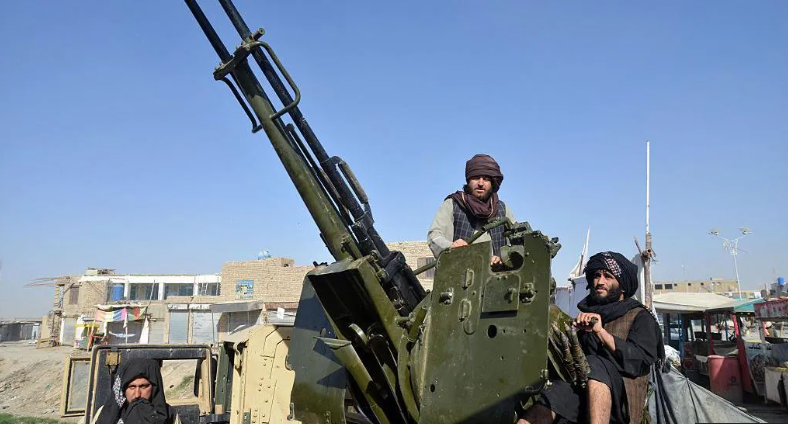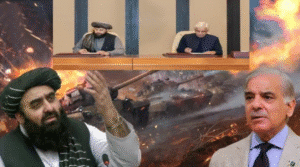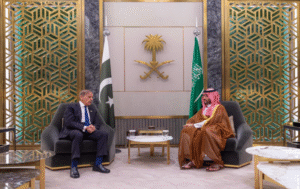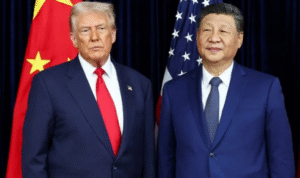Pakistan and Afghan Taliban Agree to Temporary Ceasefire After Deadly Border Clashes

Meta Description:
Pakistan and Afghanistan’s Taliban-led government have agreed to a short ceasefire following a week of deadly border clashes and alleged air strikes. The truce, mediated quietly through diplomatic channels, aims to de-escalate rising tensions along the volatile frontier.
Introduction
In a major development following one of the deadliest weeks of cross-border violence in recent months, Pakistan and Afghanistan’s Taliban government have agreed to a temporary 48-hour ceasefire. The truce, which reportedly came into effect at 13:00 GMT on Wednesday, seeks to halt further bloodshed after a series of deadly clashes and air strikes left dozens dead and many more injured on both sides.
Officials from both Islamabad and Kabul confirmed the agreement, though each side claimed that the other had requested the ceasefire first. The short-term truce follows escalating hostilities along the Spin Boldak–Chaman border region, a flashpoint in Pakistan–Afghanistan relations for decades.
Background: A Week of Escalation
Border Violence Erupts
The recent round of violence began after explosions rocked parts of Afghanistan last week, which Kabul authorities blamed on Islamabad. In response, Pakistan accused Afghan border forces of firing on Pakistani positions and providing sanctuary to militants from the Tehreek-e-Taliban Pakistan (TTP) — a banned group responsible for dozens of attacks inside Pakistan.
Fighting quickly spread across border districts, with heavy gunfire and shelling reported in Spin Boldak, Kandahar, and Torkham. Residents on both sides described scenes of panic, with civilians fleeing their homes as the situation deteriorated.
The Taliban government accused Pakistan of carrying out air strikes in Kandahar and Kabul, while Pakistan’s military said it had killed 15 to 20 Afghan Taliban fighters in defensive action. None of the claims could be independently verified, and both sides suffered casualties.
Rising Civilian Toll
According to Taliban officials, at least 12 Afghan civilians were killed and over 100 wounded by Pakistani artillery and air strikes. Local hospitals, including Kabul’s Emergency Surgical Centre, reported receiving 40 injured individuals, five of whom were dead on arrival.
Images shared by witnesses showed black plumes of smoke rising over parts of Kabul, while Taliban authorities sealed off several streets near the blast sites.
Pakistan has not officially confirmed conducting any air strikes but maintained that it was responding to unprovoked aggression and “protecting its sovereignty.”
The Ceasefire Announcement
Pakistan’s Foreign Office Statement
Pakistan’s Ministry of Foreign Affairs confirmed the ceasefire in a press release issued Wednesday evening, calling it a “constructive pause” to allow both sides to pursue a diplomatic solution.
“During this period, both sides will make sincere efforts to find a positive solution to this complex but solvable issue through constructive dialogue,” the statement read.
Diplomatic sources suggest that Qatar and China played informal roles in urging both sides to de-escalate tensions, although neither government publicly acknowledged involvement.
Taliban’s Response
Afghanistan’s government spokesman Zabihullah Mujahid confirmed that the Taliban forces were ordered to respect the ceasefire “as long as no one commits aggression.”
“Our forces have been instructed to hold fire and maintain restraint,” he said on X (formerly Twitter), adding that Afghanistan seeks peace but “will respond strongly to violations.”
Both sides emphasized that the truce was temporary, initially limited to 48 hours but open to extension if progress was made through talks.
Conflicting Claims and Mistrust
Who Asked for the Ceasefire?
While both countries have confirmed the ceasefire, they have contradictory narratives about how it came about.
Islamabad maintains that Kabul requested the truce through diplomatic channels after suffering “heavy losses.” Conversely, Taliban officials say Pakistan initiated the call for calm following domestic and international pressure.
This mutual blame underscores the deep mistrust that continues to define the relationship between the two neighbours, despite shared ethnic, cultural, and religious ties.
Air Strikes and Denials
The BBC’s Kabul bureau reported that Taliban government sources claimed two Pakistani air strikes hit Kabul late Tuesday night. However, Pakistan’s military has not publicly acknowledged any air operations inside Afghan territory.
A Taliban spokesman later described the explosions in Kabul and Kandahar as incidents involving “an oil tanker and a generator”, but eyewitness accounts and footage suggest a larger-scale blast consistent with aerial bombardment.
International observers say lack of independent verification makes it difficult to establish what actually occurred.
Historical Context: A Long, Fractured Relationship
A Border of Blood and Brotherhood
The Durand Line, drawn in 1893 by British colonial authorities, divides ethnic Pashtun tribes between Afghanistan and Pakistan. Kabul has never officially recognized it as an international border, fueling periodic disputes and resentment.
Relations have worsened since the Taliban’s return to power in 2021, when Pakistan hoped the new Afghan leadership would curb cross-border militancy. Instead, Islamabad accuses the Taliban of harbouring TTP fighters, who have carried out a wave of attacks on Pakistani soil.
The Taliban deny these allegations, insisting that “Afghanistan’s soil will not be used against any country.”
Past Clashes
This is not the first time border tensions have spiraled into violence. Similar incidents occurred in April 2022, September 2023, and again earlier this year, when Pakistan temporarily closed its borders and suspended Afghan transit trade after deadly skirmishes.
Each time, Qatar, China, and Turkey helped mediate temporary truces — but none resulted in a lasting resolution.
Humanitarian Impact
Civilians Caught in the Crossfire
The renewed violence has left border communities reeling. Families displaced from Spin Boldak and nearby Afghan villages are taking shelter in temporary camps. Local NGOs report shortages of food, medicine, and shelter materials.
On the Pakistani side, Chaman and Killa Abdullah residents describe sleepless nights amid artillery exchanges. “We could hear explosions all night. Everyone was afraid to step outside,” said Ali Jan, a trader from Chaman.
Refugee Pressure
Pakistan is already hosting millions of Afghan refugees, many of whom fled after the Taliban’s takeover. The latest conflict threatens to trigger another wave of displacement, further straining Pakistan’s fragile economy and border infrastructure.
Earlier this month, Islamabad announced plans to deport undocumented Afghan nationals, a move criticized by humanitarian agencies but defended by the government as a security necessity.
Regional Reactions
International Calls for Restraint
The United Nations Assistance Mission in Afghanistan (UNAMA) expressed concern over the recent violence, urging both sides to protect civilians and pursue dialogue.
Neighboring countries, including Iran and China, have called for “restraint and mutual understanding.” Beijing, which maintains strong relations with both governments, is believed to be monitoring the situation closely due to its Belt and Road investments in the region.
Analysts’ Perspective
Regional analysts say that both Pakistan and Afghanistan have more to lose than gain from prolonged hostilities.
“Neither side can afford a full-scale conflict,” said Islamabad-based security expert Dr. Hasan Askari Rizvi. “Pakistan is facing economic challenges, while the Taliban government is still struggling for international legitimacy.”
The Challenge of Lasting Peace
Deep-Rooted Mistrust
Despite the short truce, achieving lasting peace remains difficult. Islamabad’s demand for the Taliban to curb TTP activities continues to be the main sticking point.
The Taliban’s reluctance to act against the TTP stems from tribal, ideological, and operational ties that date back decades. Any crackdown risks internal dissent within the movement.
Fragile Ceasefire
As of Thursday, sporadic gunfire was still reported near Spin Boldak, raising doubts about the truce’s effectiveness. Diplomats say the situation remains “extremely fluid.”
Analysts warn that unless both sides establish a joint verification mechanism, the current pause could be short-lived.
“This ceasefire is fragile,” said Afghan analyst Obaidullah Baheer. “Without a communication framework or mutual trust, it may crumble at the next incident.”
The Way Forward
Dialogue Through Diplomacy
The 48-hour ceasefire may only be a temporary measure, but it represents a window of opportunity for diplomacy. Both Islamabad and Kabul have expressed willingness to pursue constructive dialogue on security and border management.
Pakistan’s Foreign Office has proposed a joint border coordination committee to investigate incidents and prevent escalation. Afghan officials have responded positively but insist that any mechanism must respect Afghan sovereignty.
Regional Cooperation
Experts suggest that regional stakeholders like China, Iran, and Qatar could play mediating roles to establish long-term border protocols — similar to the Afghan Transit Trade Agreement framework that governs economic ties.
A comprehensive border peace mechanism, they argue, could help both countries focus on economic cooperation instead of conflict.
Conclusion
The temporary ceasefire between Pakistan and Afghanistan’s Taliban government offers a brief respite after a deadly surge of violence. While it may ease immediate tensions, the deeper issues — mistrust, militant sanctuaries, and disputed borders — remain unresolved.
Both sides insist they want peace, but achieving it requires political courage and consistent communication. For now, the truce represents only a pause — not peace itself.
If Islamabad and Kabul can build on this fragile moment of calm, they might yet turn decades of hostility into a path toward stability and cooperation.
Until then, the shadow of the Durand Line continues to define a relationship torn between brotherhood and bloodshed.






